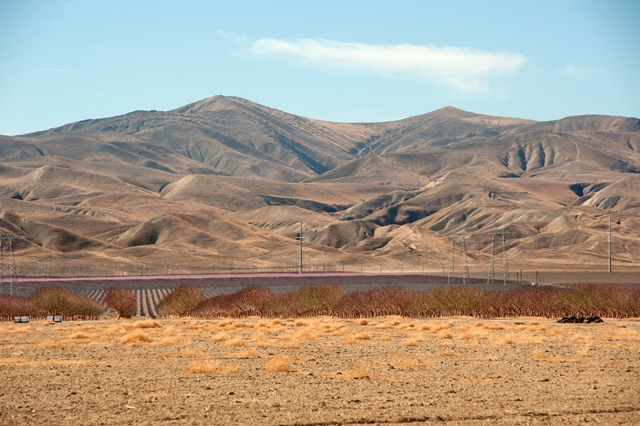Drought Costing California $1.84 Billion This Year

Dry fields and bare trees stand at Panoche Road, looking west, on Wednesday February 5, 2014, near San Joaquin, CA.
Credit: Gregory Urquiaga, Source: UC-Davis
California agriculture will lose $1.84 billion and 10,100 jobs in 2015 because of the drought, according to the University of California-Davis Center for Watershed Sciences.
The UC-Davis drought impact report says the Central Valley will be the hardest-hit area. The report also forecasts what the California agriculture industry will look like if the drought continues for another two years.
California’s groundwater supply has allowed the agriculture industry to grow over the last four years, despite of the drought. According to researchers, this groundwater will offset approximately 70% of the 2015 surface water shortage.
Here’s a look at some of the report’s other key findings:
- The direct costs of drought to agriculture will be $1.84 billion for 2015. The total impact to all economic sectors is an estimated $2.74 billion, compared with $2.2 billion in 2014. The state’s farmers and ranchers currently receive more than $46 billion annually in gross revenues, a small fraction of California’s $1.9 trillion-a-year economy.
- The loss of about 10,100 seasonal jobs directly related to farm production, compared with the researchers’ 2014 drought estimate of 7,500 jobs. When considering the spillover effects of the farm losses on all other economic sectors, the employment impact of the 2015 drought more than doubles to 21,000 lost jobs.
- Surface water shortages will reach nearly 8.7 million acre-feet, which will be offset mostly by increased groundwater pumping of 6 million acre-feet.
- Net water shortages of 2.7 million acre-feet will cause roughly 542,000 acres to be idled — 114,000 more acres than the researchers’ 2014 drought estimate. Most idled land is in the Tulare Basin.
- The effects of continued drought through 2017 (assuming continued 2014 water supplies) will likely be 6% worse than in 2015, with the net water shortage increasing to 2.9 million acre-feet a year. Gradual decline in groundwater pumping capacity and water elevations will add to the incremental costs of a prolonged drought. However, new groundwater laws could reverse groundwater depletion.
More information is available by downloading the full report.
Source: University of California-Davis









